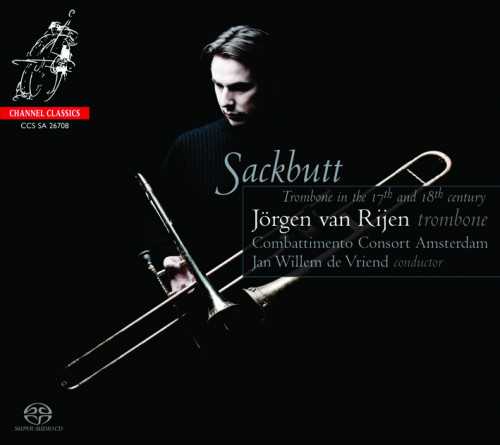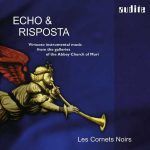
Performer: Jorgen van Rijen
Orchestra: Combattimento Consort Amsterdam
Conductor: Jan Willem de Vriend
Format: DSD64 (dsf tracks)
Label: Channel Classics
Release: 2008
Size: 2.38 GB
Recovery: +3%
Scan: yes
Johann Georg Albrechtsberger:
Concerto in B flat major 9 for trombone and strings
01. 1. Allegro Moderato
02. 2. Andante
03. 3. Finale, Allegro Moderato
Antonio Bertali:
04. Sonata à 3
Dario Castello:
05. Quarta Sonata
Leopold Mozart:
Concerto in D major
for trombone and orchestra
06. 1. Allegro
07. 2. Adagio
08. 3. Menuetto
Johann Heinrich Schmelzer:
09. Sonata à 3
Biagio Marini:
10. Sonata à 4
Georg Christoph Wagenseil:
11. 1. Con Discretione (Quasi andante)
12. 2. Allegro Assai
Antonio Bertali:
13. Sonata à 3
ABOUT THIS ALBUM
Trombonist Jorgen van Rijen is one of the few musicians who is among the elite of his profession when playing either a modern or a baroque instrument. This is something of a rarity among brass players, since most of Van Rijen’s colleagues find the two styles mutually incompatible. He was bitten by the bug when he was still a student and arrived in Lyon. There he met the baroque specialist Daniel Lassalle, who was giving lessons in the technique of playing historical trombones. Lassalle brought Van Rijen’s attention to the small number of surviving trombone concerti from the early Classical period and the extensive body of baroque music for small ensembles which combined the trombone with strings and continuo.
It was a revelation for Van Rijen to discover that it was possible to execute rapid running passages and delicate ornaments with the baroque trombone. Although you need a lot of breath to play a modern trombone, you don’t need much more than a sigh to make the baroque instrument sound. That means that you can play all kinds of very intricate figuration and curlicues. There are almost no trombonists of the baroque period whose names have come down to us, but there did turn out to be a certain gifted performer behind the early Classic works. He was a trombonist whose striking technical and musical abilities inspired the composers of his time, just as Van Rijen does today. The man’s name was Thomas Gschladt, and he was an Austrian who became a friend of the Mozart family in Salzburg. Leopold Mozart was on the auditioners’ commission when Gschladt came to audition for a job with the Archepiscopal court orchestra. In the course of the audition, Gschladt performed on no fewer than three instruments: trombone, trumpet, and violin, an unimaginable feat for a performer nowadays. Van Rijen only began to understand the true role of his instrument in early music when he started to perform chamber music of the baroque period. At the time, this was a relatively unexplored area of the brass repertoire.
When he got to know the musicians of the Combattimento Consort Amsterdam, a plan was soon made to perform and record a CD with a selection this music…



